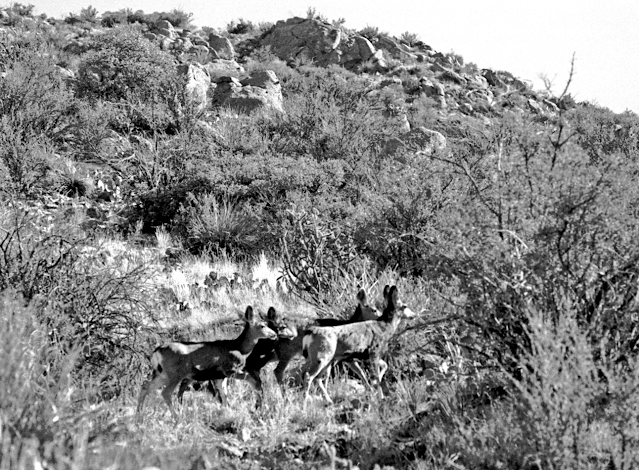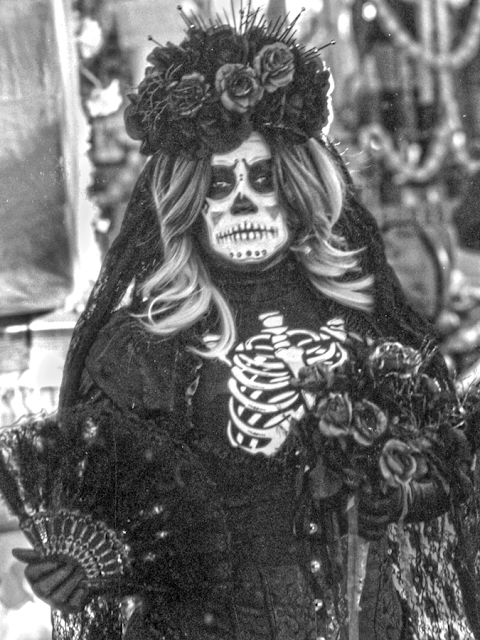 |
| John Collier Jr. |
I went to a lecture recently which was sponsored by the Maxwell Museum
of Anthropology. The announcements had indicated the presentation would
be about the museums photo archives. As it turned out, the presenter
used some photos from the archives, but mostly as illustrations for
discussing theories of photography advanced by European philosophers.
At the end of the talk I asked about the museum's holdings related to
the work of
John Collier Jr.
The lecturer, currently a curator at the museum, replied that the
Maxwell had a very large collection of works by Collier, but that no one
had worked with the material. She said she did not know if anyone in
the Anthropology or Education departments at UNM was familar with
Collier's work or making use of his techniques in regard to photo
analysis and education.
The lecturer's answers to my questions left me discouraged about the
state of knowledge about one of Twentieth Century America's photo
greats. John Collier Jr. made a lot of great pictures in the early
1940s while working under Roy Stryker at the Farm Security
Administration. Collier continued making photographs in a similar vein
for many more years all over the western hemisphere. At the same time
he also began to develop the concepts of Visual Anthropology and applied
those concepts to analyzing teaching and learning processes. Collier
taught photography classes as a full professor for many years at San
Francisco State. His accomplishments as a photographer, researcher and
teacher seem all the more extraordinary when you consider that he had
very limited formal schooling, due in a large part to injuries sustained
as a child which left him with physical impairments, dyslexia, hearing
loss and impaired speech.
As it turns out, academic engagement with Collier's work was not as
dismally scant as the lecturer had averred. While browsing the web for
information about Collier I stumbled on
an interactive presentation
about Collier's war-time work with the FSA. The web pages were the
product of a grant project conducted under the auspices of the Maxwell
Museum and The College of Education's Technology & Education Center
(TEC) at UNM in 2006. The project's director was Catherine Baudoin, who
at the time was the Maxwell's Photographic Collections Curator. The on
line presentation was organized as an interactive lesson plan enabling
exercises in interpretation of war-time photo uses by the U.S.
government using posters, photo archives and video resources. To
support the lesson plan activities, Baudoin uploaded about 400 of
Collier's FSA images to the Flickr photo sharing site where they are still available for viewing.
Unfortunately, Baudoin's web pages had become detached from the
Maxwell web site
over the years; there is no link there now to the Collier work; the
Photo Curator position seems to have evaporated, and Baudoin's name is
nowhere to be found. My guess would be that the skimpy and rather
disorganized Maxwell web site is symptomatic of budgetary deficiencies
which have focused the institution's efforts more on conservation of
holdings rather than on sustaining a coherent educational mission
incorporating up-to-date technological communications resources.
Luckily, modern search engine technology compensates for a lot of
academic entropy. Here are some useful links to information I have
come across on the web and elsewhere:
Far from Main Street:Three Photographers in Depression-Era New Mexico (
link to Amazon)
A very fine collection of photos along with essays about the FSA/OWI
work of Russell Lee, John Collier Jr. and Jack Delano. The cover photo
is by Collier. "All photographs are selected from the Pinewood
Collection of New Mexico FSA Photographs, in the Museum of Fine Arts,
Santa Fe, New Mexico ... Prints were made from original negatives
generously loaned by the Library of Congress Prints and Photographs
Division."
Oral History Interview with John Collier, 1965 January 18 Conducted by Richard K. Doud
Amazing insights into the personalities and operations of the FSA/OWI
under Stryker. The first part of the interview is accessible as an on
line audio clip, and it gives a good idea of the expressive challenge
which Collier over-came and even turned to an advantage during his long
career as a photographer, researcher and educator.
John Collier, Jr.: Anthropology, Education and the Quest for Diversity
by Ray Barnhardt, Center for Cross-Cultural Studies, University of Alaska Fairbanks.
An authoritative, first-person appreciation of Collier's work with
Eskimo and Navajo students and teachers as well as with a diverse urban
school system in San Francisco.
Photographing Navajos: John Collier Jr. on the Reservation, 1948-1953
by C. Stewart Doty, Dale Sperry Mudge, and Herbert John Benally Photographs by John Collier Jr.
(
link to Amazon)
The authors tracked down photo archives of Collier's Navajo work in
Pennsylvania and Nova Scotia and then interviewed family members of the
people depicted by Collier in the Four Corners area. The photos in the
book illustrate the techniques developed by Collier to elicit social and
cultural information by showing photographs to informants depicting
their own social and physical environments. The text and illustrations
provide a nice followup to the study of the Navajo conducted by Clyde
Kluckhohn and Dorothea Leighton in the 1930s and 1940s. Right after the
publication of
Photographing Navajos the Collier family made the
decision to donate their collection of Collier's work to the Maxwell
Museum. The book's introduction notes that "The collection includes
fifty years of photographs, film and video, field notes, daybooks, and
correspondence."
* * *
 |
John Collier Jr., Bureau with Portraits and Mementos
(and self portrait), Picuris Pueblo, NM, ca. 1945 |

















































